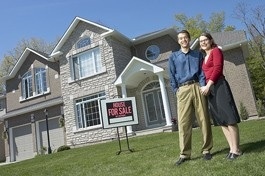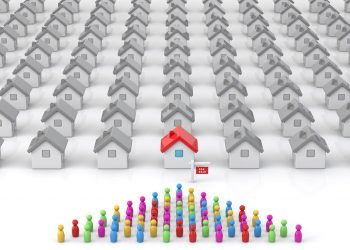 RISMEDIA, September 28, 2009—Existing-home sales in August 2009 gave back some of their strong gain in July but remain above year-ago levels, according to the National Association of Realtors®.
RISMEDIA, September 28, 2009—Existing-home sales in August 2009 gave back some of their strong gain in July but remain above year-ago levels, according to the National Association of Realtors®.
Existing-home sales- including single-family, townhomes, condominiums and co-ops- declined 2.7% to a seasonally adjusted annual rate of 5.10 million units in August from a pace of 5.24 million in July, but remain 3.4% above the 4.93 million-unit level in August 2008. In the previous four months, sales had risen a total of 15.2%.
Lawrence Yun, NAR chief economist, said the tax credit is working. “Home sales retrenched from a very strong improvement in July but continue to be much higher than before the stimulus. The first-time buyer tax credit is having the intended impact of bringing buyers into the market, allowing them to take advantage of very favorable affordability conditions,” he said. “Some of the give-back in closed sales appears to result from rising numbers of contracts entering the system, with some fallouts and a backlog contributing to a longer closing process, but the decline demonstrates we can’t take a housing rebound for granted.”
According to Freddie Mac, the national average commitment rate for a 30-year, conventional, fixed-rate mortgage fell to 5.19% in August from 5.22% in July; the rate was 6.48% in August 2008.
An NAR practitioner survey shows first-time buyers purchased 30% of homes in August, and that distressed homes accounted for 31% of transactions; both were unchanged from July. “The recent trend shows broad improvement in most of the country, but with an expected rise in foreclosures over the next 12 months we need to maintain a healthy level of ready buyers to absorb the inventory. An extension of the tax credit is critical to preserve incentives for financially qualified buyers to enter the market,” Yun said.
He added that many buyers had been on the sidelines during the past few years, waiting for signs of stabilization. “Now that the market is showing some momentum, we have an opportunity to achieve a more rapid and broader stabilization in home prices. Extending and expanding the tax credit also would help to keep other families from becoming upside down in their mortgages or risk foreclosure,” Yun said.
“When home prices show sustained gains, credit will become more widely available to other sectors because Wall Street will be able to price risks confidently. Stable home values will also allow more families to purchase consumer products and provide a strong boost for the broader economy.”
NAR President Charles McMillan, a broker with Coldwell Banker Residential Brokerage in Dallas-Fort Worth, said time is running very short for the existing tax credit. “Because it’s generally taking 60 days to close on a home after a contract is offered, buyers have little time to act to complete a purchase by the November 30 deadline,” he said. “There’s no guarantee what Congress might do, so there’s really no time to waste. Since Realtors® have unparalleled knowledge of local markets, they can also advise first-time buyers on any additional state or local programs that might be able to offer them financial assistance, and help them close on a home before the tax credit expires.”
Total housing inventory at the end of August fell 10.8% to 3.62 million existing homes available for sale, which represents an 8.5-month supply at the current sales pace, down from a 9.3-month supply in July. Unsold inventory totals are 16.4% lower than a year ago. The national median existing-home price for all housing types was $177,700 in August, down 12.5% from August 2008. Distressed properties continue to downwardly distort the median price because they generally sell for 15 to 20% less than traditional homes. Single-family home sales fell 2.% to a seasonally adjusted annual rate of 4.48 million in August from a level of 4.61 million in July, but are 2.55 higher than the 4.37 million-unit pace in August 2008. The median existing single-family home price was $177,500 in August, down 12.1% from a year ago. Existing condominium and co-op sales slipped 1.6% to a seasonally adjusted annual rate of 620,000 units in August from a spike of 630,000 in July, but are 10.1% higher than the 563,000-unit level a year ago. The median existing condo price was $179,300 in August, which is 15.7% below August 2008.
Regionally, existing-home sales in the Northeast declined 2.2% to an annual pace of 910,000 in August, but are 5.8% above August 2008. The median price in the Northeast was $241,100, which is 10.5% below a year ago. Existing-home sales in the Midwest fell 6.6% in August to a level of 1.14 million but are unchanged from a year ago. The median price in the Midwest was $149,900, down 10.4% from August 2008. In the South, existing-home sales were down 3.1% to an annual pace of 1.89 million in August but are 1.6% above August 2008. The median price in the South was $157,400, which is 11.0% below a year ago. Existing-home sales in the West declined 2.7% to an annual rate of 1.16 million in August but are 7.4% higher than a year ago. The median price in the West was $220,500, down 12.2% from August 2008.
For more information, visit www.realtor.org.










